38 cell membrane diagram with labels
Plasma Membrane Function, Structure & Diagram - Study.com 2. property of the plasma membrane that allows some substances into the cell and keeps others out 4. main structural component of the plasma membrane 6. nonpolar part of a phospholipid 11. protein... Wikipedia:Featured picture candidates/Cell membrane ... Cell membrane (diagrammatic) Original - The cell membrane, also called the plasma membrane or plasmalemma, is a semipermeable lipid bilayer common to all living cells. It contains a variety of biological molecules, primarily proteins and lipids, which are involved in a vast array of cellular processes.
Cell membrane structure diagram labeled - vegwdp.bellanita.shop biology education Labeled In the cell membrane labeled diagram, we see Glycolipid, Glycoprotein, Globular Protein, Carbohydrate, Cholesterol, Peripheral Protein, Alpha-Helix Protein, Channel Protein, and Integral Protein. The cell membrane (plasma membrane) is a thin semi-permeable membrane that surrounds the cytoplasm of a cell.

Cell membrane diagram with labels
Plant Cell: Definition, Types of Plant Cells and More - Embibe Xylem is a tissue that is formed of four different types of cells, i.e. tracheids, xylem vessels, xylem fibres and xylem parenchyma. They are the transport cells in vascular plants. They help in the transport of water and minerals from the roots to the leaves and other parts of the plants. The movement of water is unidirectional. Phloem Cell Membrane Labeling | Cell Structure Quiz - Quizizz Question 9. 30 seconds. Q. The function of carbohydrates in the cell membrane is to. answer choices. stick to other cells and sense stuff outside the cell. create energy for the cell. form the phospholipid bilayer. allow molecules to pass through it. Cell Membrane Function and Structure - ThoughtCo The cell membrane (plasma membrane) is a thin semi-permeable membrane that surrounds the cytoplasm of a cell. Its function is to protect the integrity of the interior of the cell by allowing certain substances into the cell while keeping other substances out.
Cell membrane diagram with labels. Label the Cell Membrane - Labelled diagram - Wordwall Label the Cell Membrane - Labelled diagram. Home. Features. Contact. Price Plans. Log In. Sign Up. Language. channel protein, cholesterol, external cell environment, hydrophilic (water loving) part of phospholipid bilayer, peripheral protein, internal environment of the cell, hydrophobic (water fearing) part of phospholipid bilayer, glycolipid. Labeled Plant Cell With Diagrams | Science Trends The parts of a plant cell include the cell wall, the cell membrane, the cytoskeleton or cytoplasm, the nucleus, the Golgi body, the mitochondria, the peroxisome's, the vacuoles, ribosomes, and the endoplasmic reticulum. Parts Of A Plant Cell The Cell Wall Let's start from the outside and work our way inwards. Cell Membrane (Plasma Membrane) - Genome.gov The cell membrane, also called the plasma membrane, is found in all cells and separates the interior of the cell from the outside environment. The cell membrane consists of a lipid bilayer that is semipermeable. The cell membrane regulates the transport of materials entering and exiting the cell. Narration 00:00 … Plant Cell Diagram Pictures, Images and Stock Photos Diagram of generic plant and animal cells, showing major organelles including nucleus, nucleolus, rough endoplasmic reticulum, smooth endoplasmic reticulum, cell membranes, golgi apparatus, mitochondria, vacuoles, lysosomes, ribosomes, and centrioles. The plant cell obviously also has a cell wall and chloroplasts.
Cell Membrane - The Definitive Guide | Biology Dictionary The cell membrane, also known as the plasma membrane, is a double layer of lipids and proteins that surrounds a cell. It separates the cytoplasm (the contents of the cell) from the external environment. It is a feature of all cells, both prokaryotic and eukaryotic. a 3D diagram of the cell membrane Function of the Cell Membrane Cell Organelles- Definition, Structure, Functions, Diagram - Microbe Notes A cell wall is multilayered with a middle lamina, a primary cell wall, and a secondary cell wall. The middle lamina contains polysaccharides that provide adhesion and allow binding of the cells to one another. After the middle lamina is the primary cell wall which is composed of cellulose. Cell membrane structure diagram labeled - deq.adelisushi.de Cell membrane diagram labeled.Proteins and lipids are the major components of the cell membrane.A variety of compounds including sugars and amino acids pass through the plasma membrane and into the cell at a much higher rate than would be expected on the basis of their size, charge, distribution coefficient, or magnitude of the concentration. Label the structure of the cell-surface membrane ... PDF Human Cell Diagram, Parts, Pictures, Structure and Functions 2 Diagram of the human cell illustrating the different parts of the cell. Cell Membrane The cell membrane is the outer coating of the cell and contains the cytoplasm, substances within it and the organelle. It is a double-layered membrane composed of proteins and lipids.
Structure of Membrane in Cells (With Diagram) - Biology Discussion In Gram-positive bacteria, the cell wall (Fig. 2.11) is (30-100 nm) thick outside the plasma membrane. The cell wall consists of peptidoglycan which is a polysaccharide- peptide complex. The polysaccharide complex of the adjacent chains are joined together by peptide bridges containing different kinds of amino acids like D and L-alanine, D ... Basic Cell Membrane Label - Labelled diagram - Wordwall Integral Protein (channel), Peripheral Protein, Phosphate, Lipid, Hydrophilic, Hydrophobic, Glycoprotein. Cell Membrane Detailed Diagram Labeled Cell Membrane Detailed Diagram Labeled. A diagram of the plasma membrane of a cell. The phospholipid bilayer separates the cytoplasm (below) from the extracellular fluid (above). This image is created by Wikimedia Commons user LadyofHats Mariana Ruiz, who released it into the public domain. Animal Cells: Labelled Diagram, Definitions, and Structure - Research Tweet The endoplasmic reticulum (s) are organelles that create a network of membranes that transport substances around the cell. They have phospholipid bilayers. There are two types of ER: the rough ER, and the smooth ER. The rough endoplasmic reticulum is rough because it has ribosomes (which is explained below) attached to it.
Flow cytometry - Wikipedia Labels, dyes, and stains can be used for multi-parametric analysis (understand more properties about a cell). Immunophenotyping is the analysis of heterogeneous populations of cells using labeled antibodies [35] and other fluorophore containing reagents such as dyes and stains.
Cell membrane with labeled educational structure scheme vector ... 2. Editable Vector .EPS-10 file. 3. High-resolution JPG image. Use for everything except reselling item itself. Description: Cell membrane with labeled educational structure scheme vector illustration. Anatomical closeup drawing with cross section element. Carbohydrate, globular protein or cholesterol location visualization.
Labeling a cell membrane Diagram | Quizlet Labeling a cell membrane Diagram | Quizlet Labeling a cell membrane 5.0 (8 reviews) + − Learn Test Match Created by EGSchumacher Terms in this set (9) Hydrophobic tail ... Hydrophilic head ... Channel Protein (integral protein) ... Glycolipid ... Cholesterol ... Phospholipid Bilayer ... Glycoprotein ... Peripheral Protein ... Carbohydrate Chain ...
A Labeled Diagram of the Animal Cell and its Organelles As observed in the labeled animal cell diagram, the cell membrane forms the confining factor of the cell, that is it envelopes the cell constituents together and gives the cell its shape, form, and existence. Cell membrane is made up of lipids and proteins and forms a barrier between the extracellular liquid bathing all cells on the exterior ...
Interactive Cell Cycle - CELLS alive INTERPHASE. Gap 0. Gap 1. S Phase. Gap 2. MITOSIS . ^ Cell Cycle Overview Cell Cycle Mitosis > Meiosis > Get the Cell Division PowerPoints
The Mitochondrion - Molecular Biology of the Cell - NCBI ... The enzymes of the respiratory chain are embedded in the inner mitochondrial membrane, and they are essential to the process of oxidative phosphorylation, which generates most of the animal cell's ATP. The inner membrane is usually highly convoluted, forming a series of infoldings, known as cristae, that project into the matrix. These ...
CELL MEMBRANE LABEL Diagram | Quizlet Practice labeling the parts of the cell membrane Terms in this set (6) Channel Protein hole or tunnel that particles may pass through to go in / out of cell Marker protein identifies or labels the cell Receptor protein receives information Heads part of the phospholipid that loves water (hydrophili) - points to the most outside and inside of cell
Diagram of a cell membrane with labels - nist.gov Essential Biological FunctionsImmune response, Cell metabolism, Neurotransmission, Photosynthesis, Cell adherence, Cell growth and differentiationPotential Commercial ApplicationsDrug response monitoring, Chemical manufacturing, Biosensing, Energy conversion, Tissue engineering ... Diagram of a cell membrane with labels. Appears In. Biology in ...
Interactive Bacteria Cell Model - CELLS alive Periplasmic Space: This cellular compartment is found only in those bacteria that have both an outer membrane and plasma membrane (e.g. Gram negative bacteria).In the space are enzymes and other proteins that help digest and move nutrients into the cell. Cell Wall: Composed of peptidoglycan (polysaccharides + protein), the cell wall maintains the overall shape of a …
The Cell - ScienceQuiz.net The diagram shows a plant cell as seen under a microscope. Two of the labels are incorrect. What are they? ... A is the cell membrane and DNA is located inside B.?
Simple Columnar Epithelium: A Labeled Diagram and Functions These form a brush border. They also increase the absorptive surface area of these cells. On a concluding note, simple columnar epithelium has two primary functions of absorption and secretion. In the small intestine, it facilitates the absorption of nutrients. It also secretes mucus, which helps to lubricate, moisten, and protect the surface.
Cell Membranes - Overview Describe the function of | Chegg.com Answer to Cell Membranes - Overview Describe the function of. Science; Biology; Biology questions and answers; Cell Membranes - Overview Describe the function of the cell membrane: Label the Phospholipid diagram below using the following terms: - Hydrophobic - Hydrophilic - Head - Tail - Polar - Nonpolar How do the properties of a phospholipid molecule lead to the formation of a cell?
History of cell membrane theory - Wikipedia Two experiments in 1924 laid the groundwork to fill in this gap. By measuring the capacitance of erythrocyte solutions Fricke determined that the cell membrane was 3.3 nm thick. Although the results of this experiment were accurate, Fricke misinterpreted the data to mean that the cell membrane is a single molecular layer.
Human Cell Diagram, Parts, Pictures, Structure and Functions Diagram of the human cell illustrating the different parts of the cell. Cell Membrane. The cell membrane is the outer coating of the cell and contains the cytoplasm, substances within it and the organelle. It is a double-layered membrane composed of proteins and lipids. The lipid molecules on the outer and inner part (lipid bilayer) allow it to ...
Cell: Structure and Functions (With Diagram) - Biology Discussion 1. Eukaryotes are sophisticated cells with a well defined nucleus and cell organelles. 2. The cells are comparatively larger in size (10-100 μm). 3. Unicellular to multicellular in nature and evolved ~1 billion years ago. 4. The cell membrane is semipermeable and flexible. 5.
Endomembrane system - Wikipedia Its membrane is the site of production of all the transmembrane proteins and lipids for most of the cell's organelles, including the ER itself, the Golgi apparatus, lysosomes, endosomes, mitochondria, peroxisomes, secretory vesicles, and the plasma membrane. Furthermore, almost all of the proteins that will exit the cell, plus those destined ...
Cell Membrane Function and Structure - ThoughtCo The cell membrane (plasma membrane) is a thin semi-permeable membrane that surrounds the cytoplasm of a cell. Its function is to protect the integrity of the interior of the cell by allowing certain substances into the cell while keeping other substances out.
Cell Membrane Labeling | Cell Structure Quiz - Quizizz Question 9. 30 seconds. Q. The function of carbohydrates in the cell membrane is to. answer choices. stick to other cells and sense stuff outside the cell. create energy for the cell. form the phospholipid bilayer. allow molecules to pass through it.
Plant Cell: Definition, Types of Plant Cells and More - Embibe Xylem is a tissue that is formed of four different types of cells, i.e. tracheids, xylem vessels, xylem fibres and xylem parenchyma. They are the transport cells in vascular plants. They help in the transport of water and minerals from the roots to the leaves and other parts of the plants. The movement of water is unidirectional. Phloem
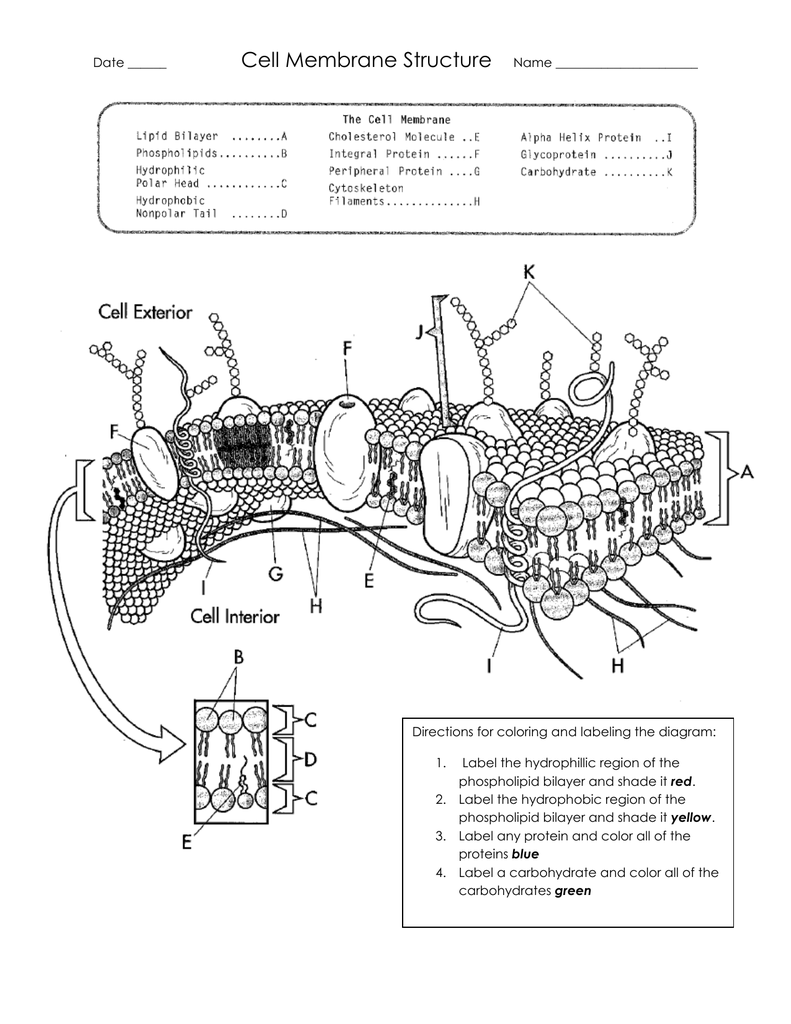




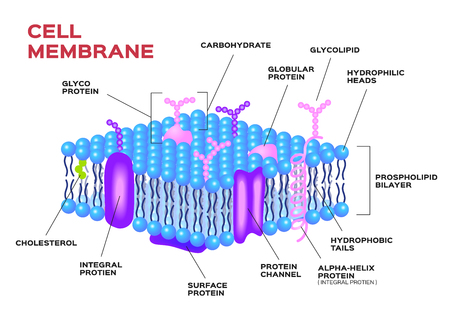











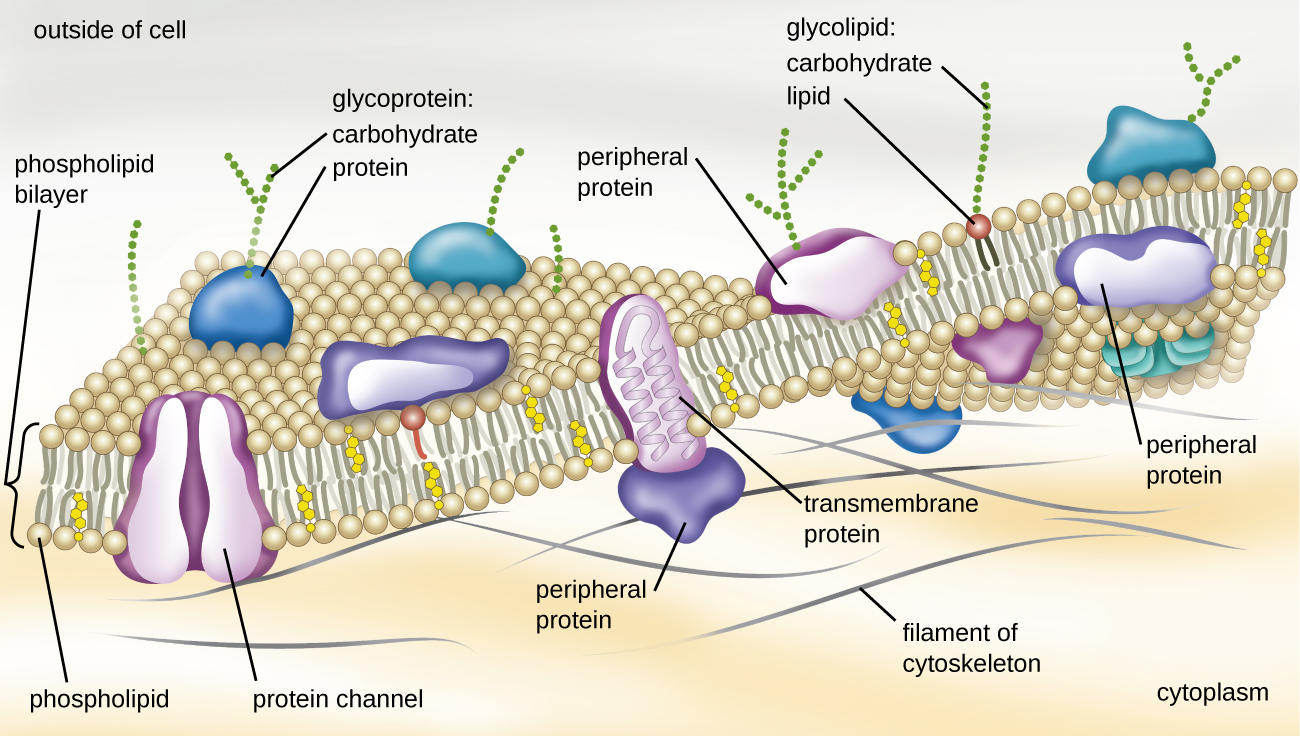

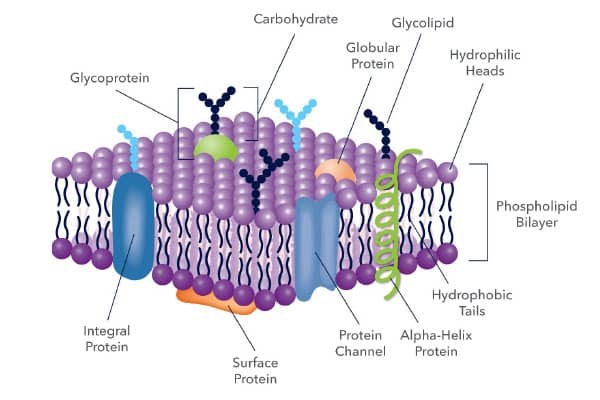
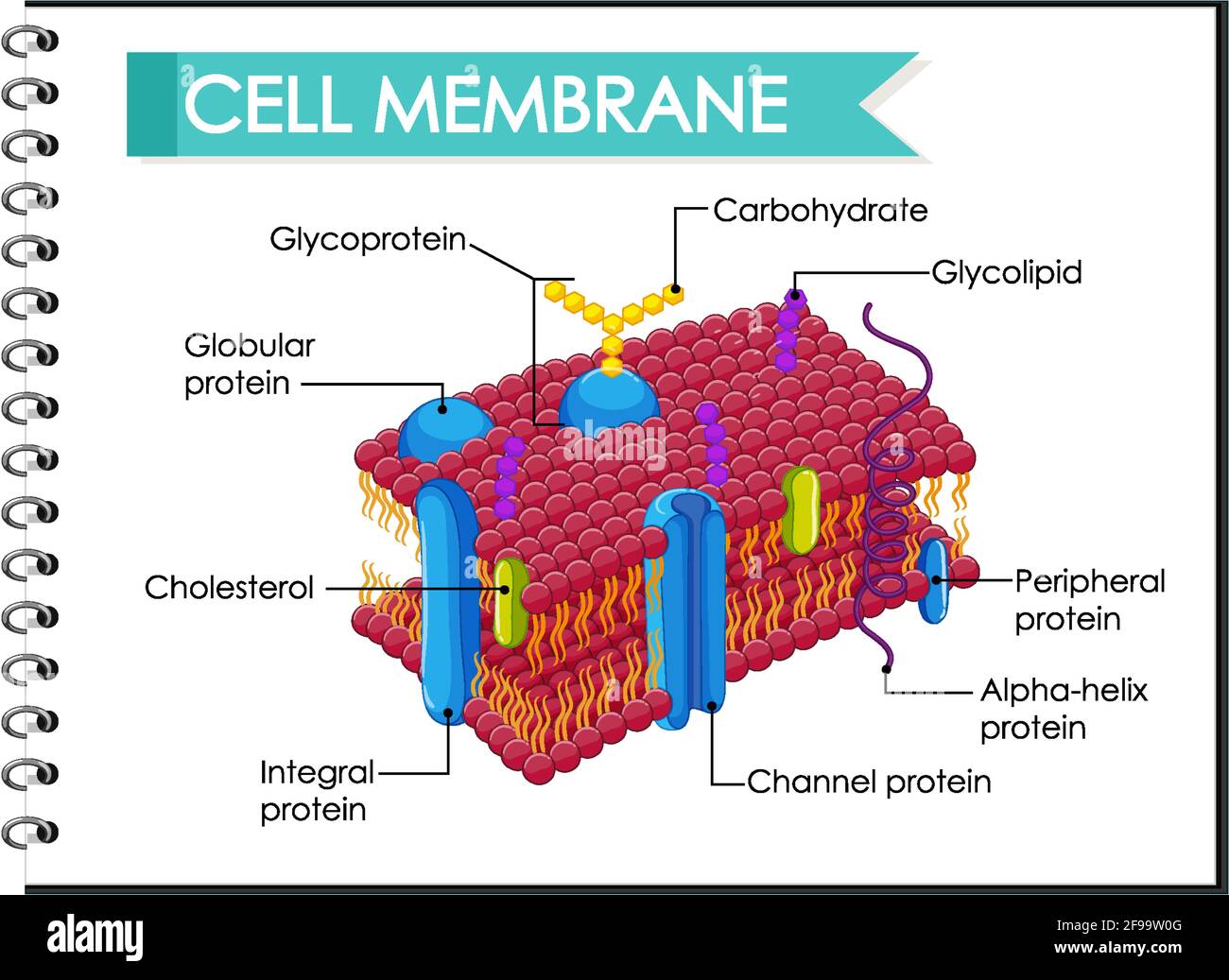

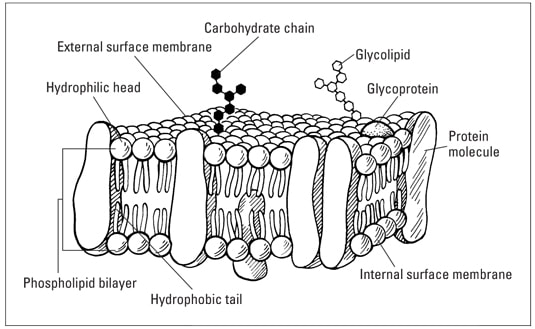
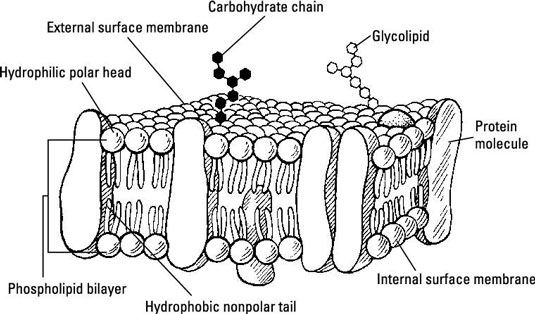


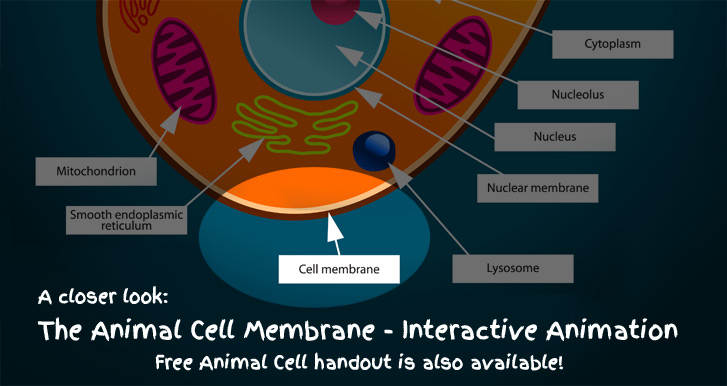





Post a Comment for "38 cell membrane diagram with labels"